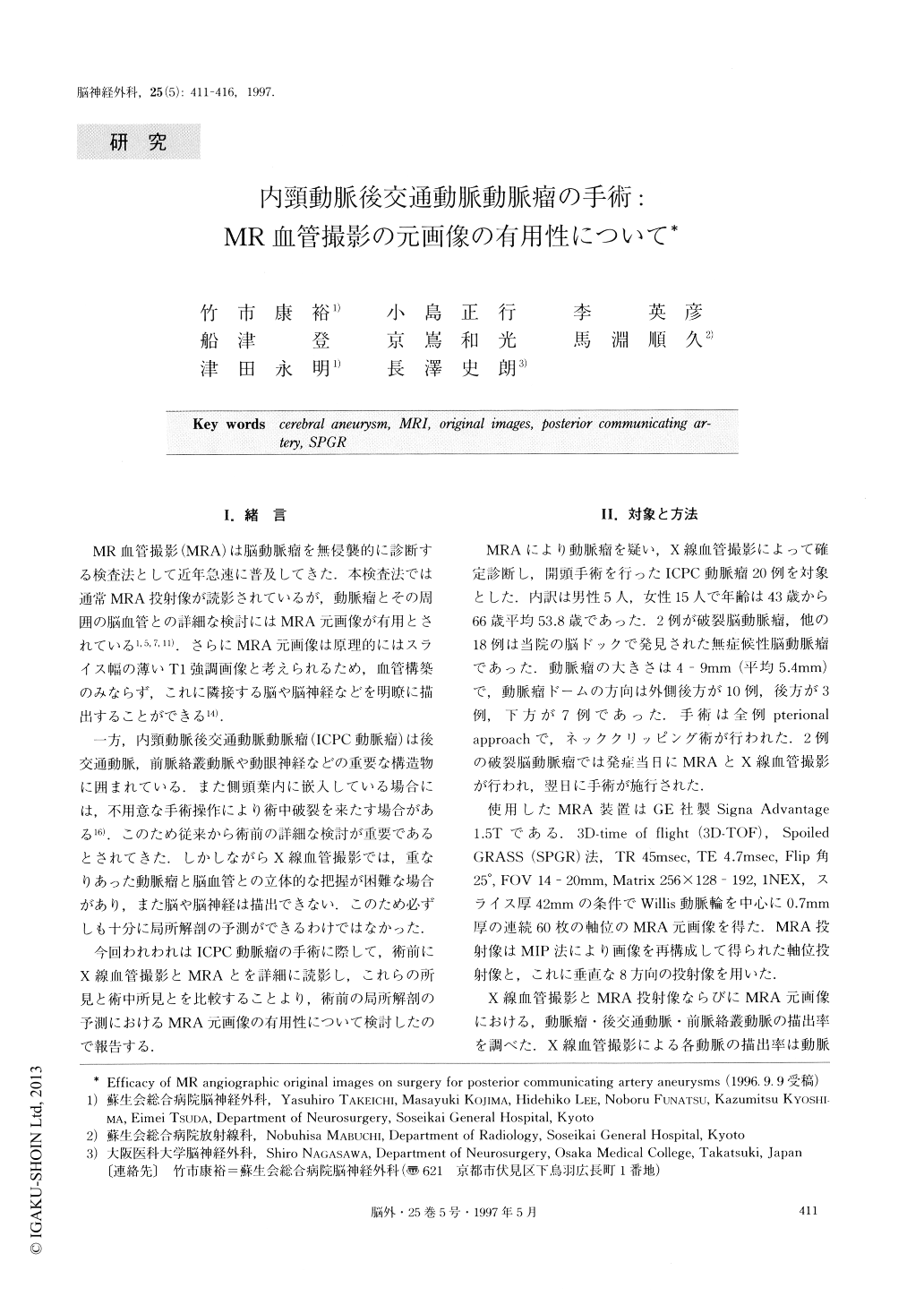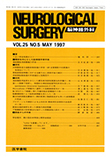Japanese
English
- 有料閲覧
- Abstract 文献概要
- 1ページ目 Look Inside
I.緒言
MR血管撮影(MRA)は脳動脈瘤を無侵襲的に診断する検査法として近年急速に普及してきた.本検査法では通常MRA投射像が読影されているが,動脈瘤とその周囲の脳血管との詳細な検討にはMRA元画像が有用とされている1,5,7,11).さらにMRA元画像は原理的にはスライス幅の薄いT1強調画像と考えられるため,血管構築のみならず,これに隣接する脳や脳神経などを明瞭に描出することができる14).
一方,内頸動脈後交通動脈動脈瘤(ICPC動脈瘤)は後交通動脈,前脈絡叢動脈や動眼神経などの重要な構造物に囲まれている.また側頭葉内に嵌入している場合には,不用意な手術操作により術中破裂を来たす場合がある16).このため従来から術前の詳細な検討が重要であるとされてきた.しかしながらX線血管撮影では,重なりあった動脈瘤と脳血管との立体的な把握が困難な場合があり,また脳や脳神経は描出できない.このため必ずしも十分に局所解剖の予測ができるわけではなかった.
This study evaluated the usefulness of axial source images of magnetic resonance angiography (MRA) on preoperative depiction of surgical topography around posterior communicating artery aneurysms. Twenty pa-tients with posterior communicating artery aneurysms,two ruptured and eighteen unruptured, underwent con-ventional angiography as well as axial source and pro-jection images obtained by three-dimensional time-of-flight MRA techniques.By comparing the topography based on these angiograms to that confirmed during surgery,we evaluated useful information specific to the source images of MRA.
Source images of MRA visualized the posterior com- municating artery and the anterior choroidal artery in eighteen cases (90%) and five cases (25%),respectively.The posterior communicating artery was recognized at a higher rate by source images of MRA than by con-ventional angiography(65%), while the anterior choroi-dal artery was recognized at a lower rate than by com-bined angiography (75%).We realized some specific in-formation to the source images of MRA including the topographical relations between the aneurysmal neckand the orifice of the posterior communicating artery,the relations between the aneurysmal dome and the oculomotor nerve and the aneurysmal dome buried into the temporal lobe. The information suggested a satis-factory direction of safe aneurysmal clipping so as notto occlude the posterior commucating artery. It was concluded that the source images of MRA provided additional useful information on surgical topography in 60% of the cases involving posterior communicating artery aneurysms. Although not essen-tial in every case, the information would be beneficial in cases with the aneurysmal dome suspected to be in the temporal lobe or when the surrounding topography can not be clearly understood by angiography.

Copyright © 1997, Igaku-Shoin Ltd. All rights reserved.


